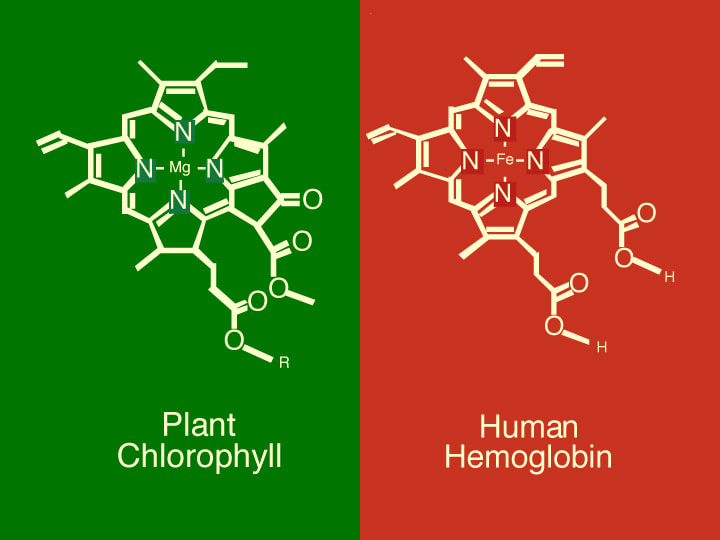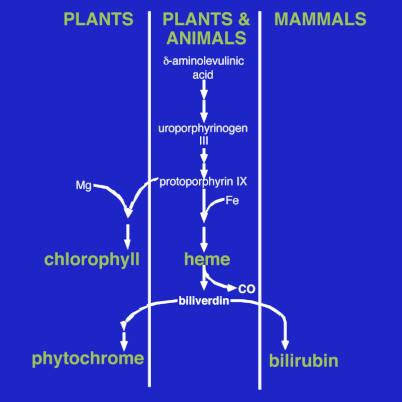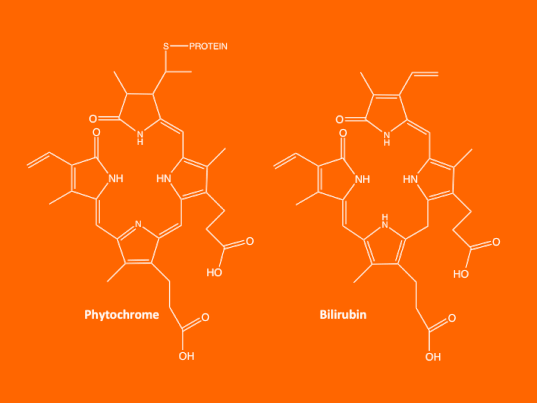What is Humoral Phototransduction?
The most fundamental behaviors of humans and other animals are the daily sleep-wake cycle and (for some) seasonal changes in mood and energy, all mostly driven by the sun. Plants, too, have circadian (daily) and circannual (seasonal) behavior rhythms as well.
Dr. Dan Oren's 1996 paper on "Humoral Phototransduction" proposed that just as these fundamental responses to light were conserved across plants and animals, the actual molecular structures that absorbed light for some of these purposes had common patterns across the plant and animal kingdoms.
Drawing on the common structure of the light-absorbing part of the chlorophyll molecule in plants and the light-absorbing part of heme molecules in animals, and the similar structures of the light-absorbing parts of plant phytochrome and animal bile pigments, the model proposed that hemoglobin and the bile pigments also played critical roles as light sensors in humans and animals.
One prediction made by this model was that bright light shining on these molecules in the eye would lead to elevated levels of carbon monoxide and other neurotransmitter-like gases in the blood draining from the retinal veins, and this blood would influence brain responses to bright light. This would explain how light gives energy to plants and to people with seasonal affective disorder.
The most fundamental behaviors of humans and other animals are the daily sleep-wake cycle and (for some) seasonal changes in mood and energy, all mostly driven by the sun. Plants, too, have circadian (daily) and circannual (seasonal) behavior rhythms as well.
Dr. Dan Oren's 1996 paper on "Humoral Phototransduction" proposed that just as these fundamental responses to light were conserved across plants and animals, the actual molecular structures that absorbed light for some of these purposes had common patterns across the plant and animal kingdoms.
Drawing on the common structure of the light-absorbing part of the chlorophyll molecule in plants and the light-absorbing part of heme molecules in animals, and the similar structures of the light-absorbing parts of plant phytochrome and animal bile pigments, the model proposed that hemoglobin and the bile pigments also played critical roles as light sensors in humans and animals.
One prediction made by this model was that bright light shining on these molecules in the eye would lead to elevated levels of carbon monoxide and other neurotransmitter-like gases in the blood draining from the retinal veins, and this blood would influence brain responses to bright light. This would explain how light gives energy to plants and to people with seasonal affective disorder.
The above illustration is copyright by Jeanette Kuvin Oren. It may not be reproduced with out attribution to the artist and to this website.
It may not be used for any commercial purpose without the consent of the artist.
It may not be used for any commercial purpose without the consent of the artist.



